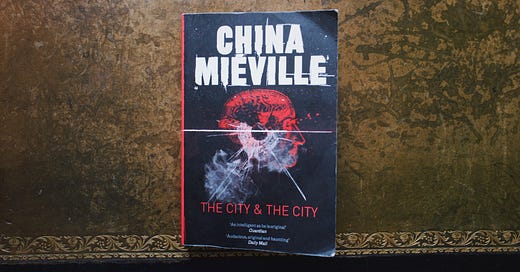The City & the City: what makes a city a uniquely strange place?
How to Read and Analyse a Novel: Analysing 'the City'
This post is part of a course I’m currently running for paid subscribers called How to Read and Analyse a Novel—we have now moved on to reading and discussing individual books! With each book, we are taking a particular topic or theme and exploring its role in the novel; this allows for a reading which is both focussed and comprehensive, helping you hone your analytical skills. Today we are looking at the city in China Miéville’s The City & the City. For full introductory details and the reading list, start here. If you’d like to join but feel like you’re too late, please do—you can take this completely at your own speed, and I will continue to keep up with comments and thoughts on all the books we discuss. You can adjust your notification settings here if you would like to opt out of these emails.
The City & the City is not your average police procedural. Sure, we have some of the usual characteristics: a murder, an emotionally unavailable detective, a bunch of red herrings. And, of course, a dark and dingy city. Only in this novel, we have two of them, and they sit on, in, and around each other. Two nation-state cities with different languages, different cultures, different architectural styles, and different legal systems. How does it work? Well, the citizens of each city are taught to “unsee” the other, allowing the two to co-exist, though not always comfortably.
It’s a mad premise, but of course veteran ‘Weird’ author China Miéville handles it with ease. If anything the dynamics felt even more convincing to me on a second read, and I also better appreciated the way Miéville handled reader expectation with regard to the crime genre and its tropes.
Miéville will always be one of the best city writers to me; very few manage to capture the life of a city as well as he. If I could’ve assigned 600-page tome Perdido Street Station, I would’ve. The City & the City stands out in his oeuvre for not employing some of the richer, more baroque writing of some of his other work—he naturally emulates the sparer prose style of the detective fiction he is riffing off—but what it lacks for in vivid imagery and description, it makes up for in a premise that captures the very idea of ‘a city’ in illuminating and surprising ways. Today, we’ll be looking more closely at the way Miéville draws out this idea.





